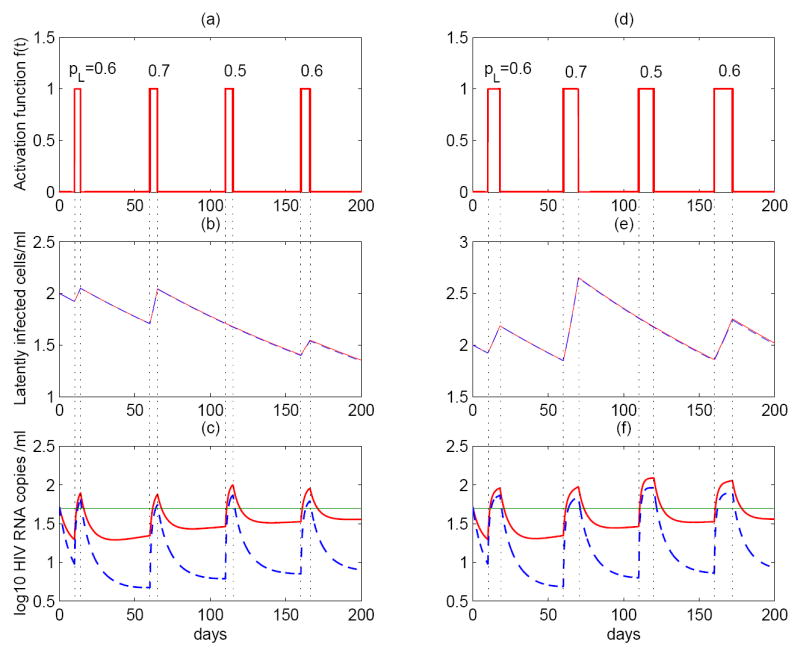Figure 7.

Asymmetric division of latently infected cells stimulated by intermittent antigen (model (7)) can generate intermittent viral blips. The left column: activations occur at the time of 10, 60, 110 and 160 day, and each lasts 4, 5, 5, and 6 days, respectively. The right column: activations occur at the same time, but the antigen lasts twice as long as the left column. In (b)(c)(e)(f), we performed simulations with different drug efficacies: ∈ = 0.8 (red solid line); ∈ = 0.9 (blue dashed line). For a higher level of drug efficacy, the amplitude of blips is smaller. Viral blips emerge whenever there exists antigenic stimulation. When the antigen is present for a longer time (the right column), the duration of blips is longer. If the probability pL is small (< 0.5), then the size of latent reservoir decreases; if pL is big (> 0.5), then the size of latent reservoir increases. This can be used to reconcile the different half-life estimates of the latent reservoir.
